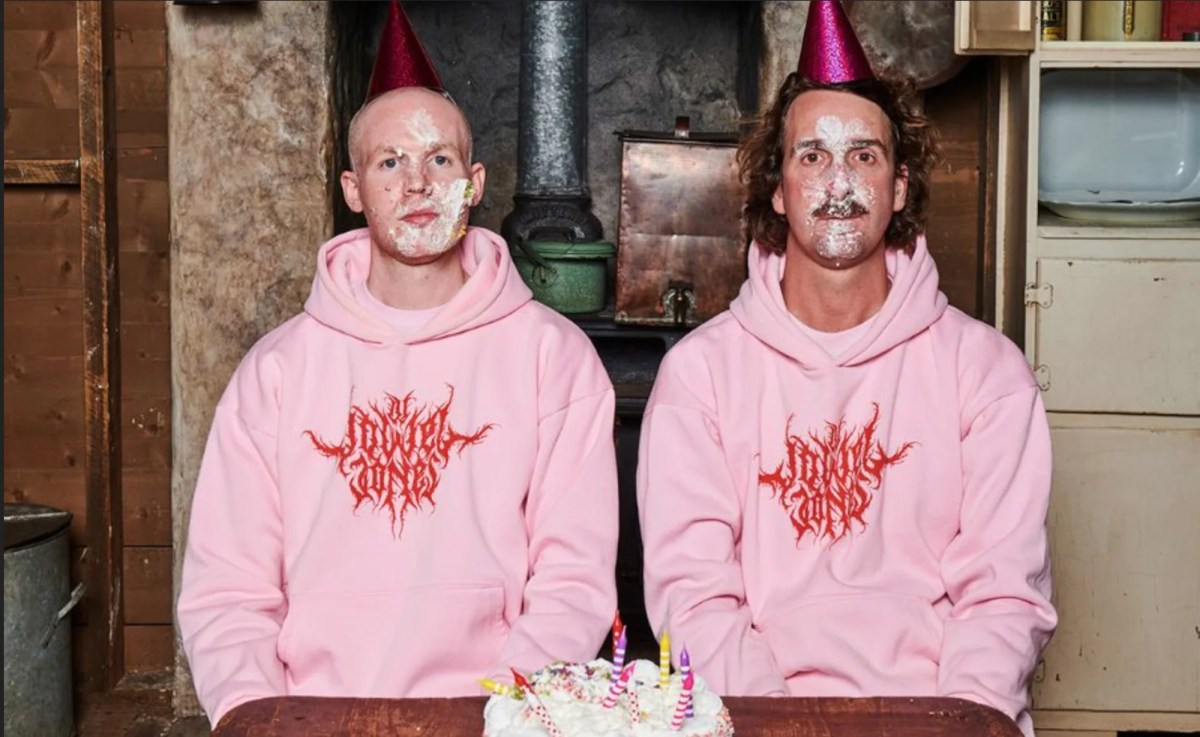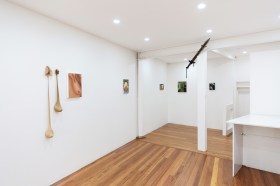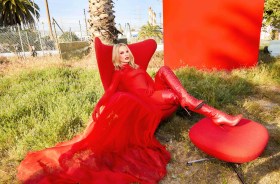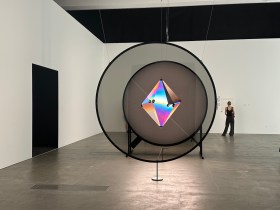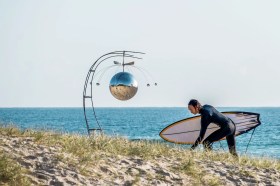Dale Hardiman says he is ‘marginally biased’ when it comes to fun, quirky design.
His company Dowel Jones – created with co-founder Adam Lynch when they were both industrial design students – has gone on to become recognised internationally for its individual flair, zesty practicality and celebration of local materials, in an industry plagued by cheap offshore manufacturing.
‘We started the brand with a vision to manufacture almost everything in Australia. That’s our purpose – to support industry in Australia, from an environmental perspective,’ Hardiman tells ArtsHub.
It is unsurprising then that a survey exhibition of the design firm’s decade-long practice is being presented at the National Wool Museum in Geelong, where Dowel Jones continues to maintain a studio factory. It is a perfect fit, as Geelong is a UNESCO City of Design.
Speaking with ArtsHub while he is installing the exhibition, which opens 26 July, Hardiman describes the brand’s design philosophy as colourful.
‘When we started the company 10 years ago, everything in the furniture world was black and grey, and there were a lot of solid timbers,’ Hardiman says. ‘And, because we manufacture locally, we quickly found out that it was the same cost to powder-coat a chair pink as it was to do it black. So, we thought, “why don’t we just launch with colour, and that can be a part of our ongoing language”.’
Hardiman continues: ‘We aren’t exactly a conventional design practice or manufacturer, because we do so many varying designs, from small installation projects right through to commercial furniture for apartment buildings and hotels. The common theme between all of that is our lateral thinking.’
He says that the studio’s social media gives a big clue to the Dowel Jones brand, but is less about posts, and more about passion.
‘We’re not posting a chair saying, “here’s a chair”. Instead, we’ll do things with the public and allow them to design objects with us, so that they feel a relationship with us, and they add value to their objects.’ There’s a piece in the exhibition that’s testament to that social practice. In May, Hardiman and Lynch invited people to comment on a post, adding they would put it on a chair. ‘We had 1500 comments!’ says Hardiman. Those names have been digitally printed onto an upholstery fabric, ‘which means that you’ll be able to come to the exhibition and see yourself in that object’.
Collaboration bolsters creativity
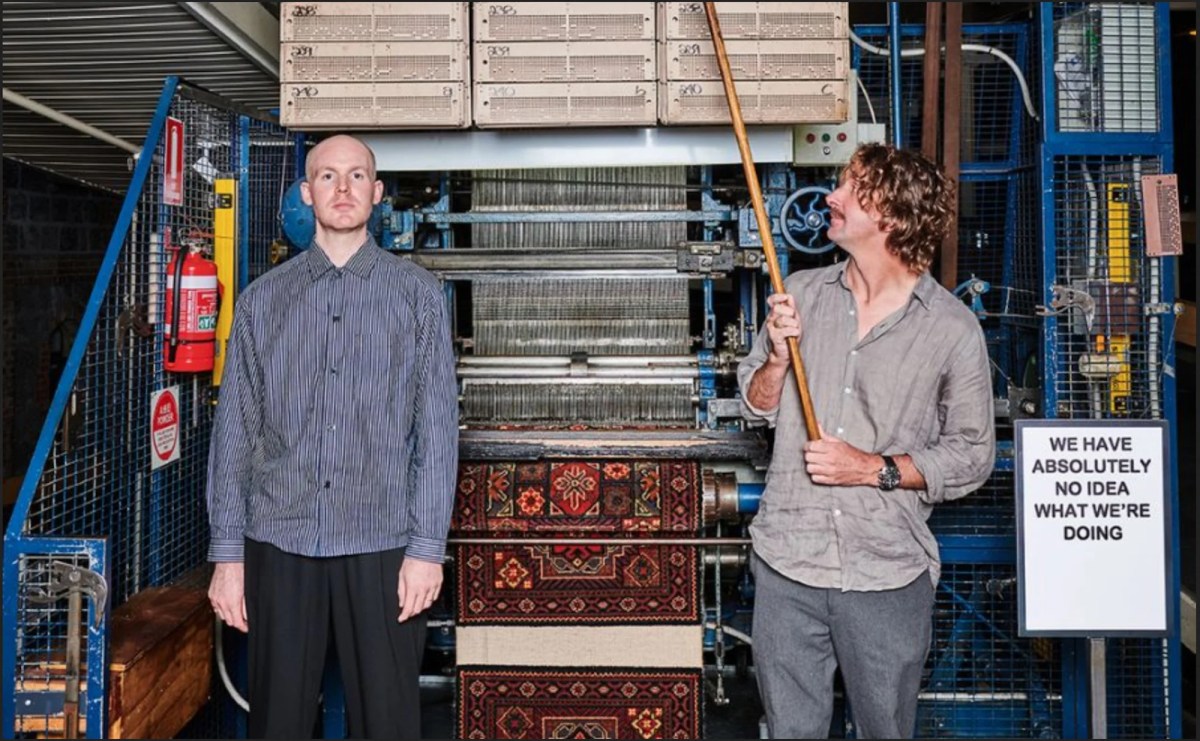
Collaboration started back when Hardiman and Lynch were students, and were tasked with designing an object together. It won an award, which became the seed money for their studio.
‘I have no idea how to make furniture,’ says Hardiman, adding that Lynch is the talent in that area. ‘Our strong suit as a company, as a brand and as designers, is that we come together.’
Hardiman says they wanted the exhibition to have a different feel to the standard design brand retrospective. So, they turned to their friends – fellow manufacturers. The result is an exhibition curated around the chapters Past, Present and Future. Visitors will move from historical pieces made in the studio’s early years through current designs and collaborations, to what Hardiman describes as, ‘all about partnering with new companies, designers and artists to produce new collections’.
There are 12 new projects. Among the highlights is a collaboration with MoPA (Museum of Play and Art) to create a rug that carries the self-portraits of 643 children who visited the museum earlier this year. Another project is a collaboration with Alterfact studio to produce 20 3D-printed porcelain vases using data from the Australian Bureau of Statistics that looks at wool production in Victoria over the past 99 years.
Another highlight is the use of the National Wool Museum’s 1910 Axminster Jacquard loom, traditionally used for weaving a botanical Persian-style rug. Hardiman explains: ‘We asked Beci Orpin to look at orchids based around Geelong and the surrounding region. We then tufted them from wool, replacing the traditional centre of these rugs with local orchids.’
The result will be exhibited with a fresh floral display on small tables created by Dowel Jones.
‘We wanted to include as many people from the area in the exhibition as possible,’ Hardiman adds. ‘This isn’t just about us, Dowel Jones – it’s about everyone around us. There are 643 children on the rug, 1400 names on a chair, and then the collaborations – so over 2000 participants making this work, and we will be crediting them all.’
He believes that one of the pillars of good design is emotional durability, ‘which is how do we as designers, and as a brand, create value outside of economic value?’ he explains.
‘My thinking is a good design can reach as many people as possible. So, this is why we don’t produce incredibly expensive objects, because they can only be consumed by one. Rather, we prefer to produce accessible objects that can be consumed by many,’ Hardiman concludes.
This exhibition is witness to durability, and future.
Ten Years of Dowel Jones is at the National Wool Museum, Geelong, from 26 July – 24 November 2024.

